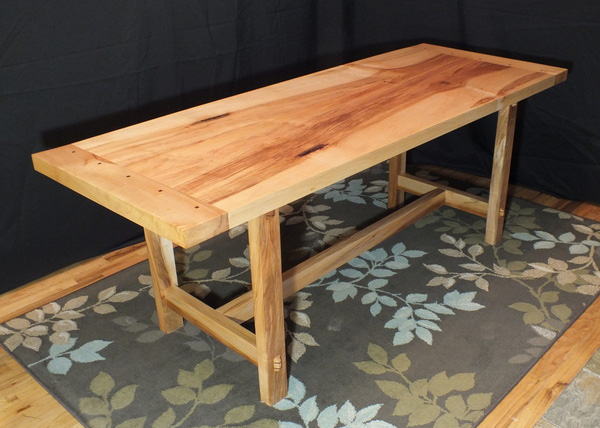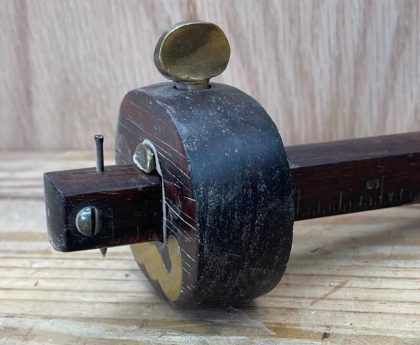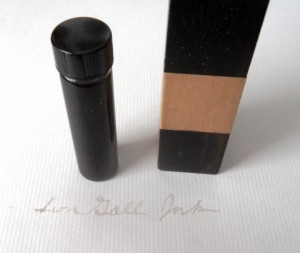Choosing the right finish for your dining table is a crucial decision that affects both its aesthetic appeal and durability. With numerous options available, each with its own set of pros and cons, it’s important to be well-informed before discussing preferences with your furniture designer. In this guide, we will delve into the advantages and disadvantages of various finishes, including Hard Wax Oil, water-based urethanes, oil-based urethanes, lacquers, conversion varnishes, shellac, and even painting options.
- Hard Wax Oil Finishes:
Pros:
- It enhances the natural beauty of wood, providing a warm and rich appearance.
- Easy to apply and repair, making it suitable for DIY enthusiasts.
- Low odor and VOC content, making them environmentally friendly.
Cons:
- Requires more frequent maintenance compared to some other finishes.
- Limited protection against heat and scratches compared to harder finishes.
- Limited protection against water and stains
- It does not fully seal the wood, making the wood more susceptible to changes in humidity, resulting in more movement.
- Water-Based Urethanes:
Pros:
- Low odor and VOC content, making them environmentally friendly.
- Quick drying time, allowing for faster project completion.
- Maintains the natural color of the wood, reducing yellowing over time.
- Good durability and resistance to scratches.
Cons:
- It can raise the grain of the wood, requiring additional sanding.
- An added step prior to finishing is to raise the grain with water. People who watch too much YouTube call this water-popping.
- It may not provide the same depth and warmth as oil-based finishes.
- It can be a more brittle finish, susceptible to cracking if in high wood movement areas.
- Oil-Based Urethanes:
Pros:
- Offers a durable and protective finish, ideal for high-use areas like dining tables.
- It provides a rich, warm color that enhances the wood’s natural beauty.
- Excellent resistance to heat and scratches.
- Seals the wood well, slowing the effect of humidity on wood movement.
Cons:
- Longer drying times compared to water-based alternatives.
- You can speed this up with a commercial urethane that allows you to add a hardener that causes the finish to set up faster and become more durable.
- It can emit strong odors and higher VOC levels during application.
- It may amber over time, altering the wood’s original color.
- Lacquers:
Pros:
- Fast-drying, providing a smooth and durable finish.
- Available in various sheens, allowing for customization.
- It creates a hard and glossy surface that enhances the wood’s appearance.
- Suitable for both hand-applied and sprayed applications.
Cons:
- Limited resistance to heat and scratches.
- Application may require professional expertise due to toxicity and flammability.
- Vulnerable to UV damage, leading to ambering and fading over time.
- Conversion Varnishes:
Pros:
- Exceptional durability and resistance to wear, chemicals, and moisture.
- It provides a clear finish in several different sheens that enhance the wood’s appearance.
- It is suitable for high-use areas, making it an ideal choice for dining tables.
Cons:
- Requires professional application due to toxicity and flammability.
- Relatively higher VOC content compared to water-based alternatives.
- harder to repair when damaged
- Shellac Finishes:
Pros:
- Natural and non-toxic finish derived from the Lac beetle.
- Dries quickly, allowing for faster project completion.
- Easy to repair and suitable for both antique and contemporary furniture.
Cons:
- Susceptible to water damage and alcohol spills.
- Limited durability compared to other finishes, requiring regular maintenance.
- It can darken over time, affecting the original appearance.
- Painting on Tables:
Pros:
- Infinite color options provide complete creative freedom.
- Conceals imperfections and enhances design aesthetics.
- It can be easily updated or repainted for a fresh look.
Cons:
- Limited protection against wear and scratches.
- Alters the natural look and feel of the wood.
- Armchair woodworkers will make fun of you for painting wood.
Choosing the right finish for your dining table involves considering both aesthetic preferences and practical needs. Discussing these options with your furniture designer while keeping in mind the pros and cons of each finish will help ensure a beautifully finished dining table that meets your expectations in terms of both style and functionality.
Related





